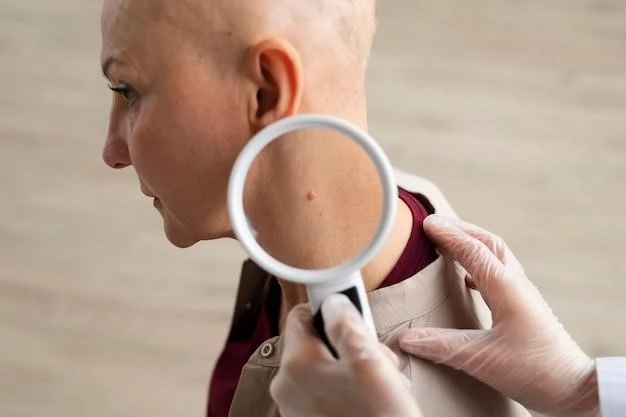Overview of Bahemuka–Brown Syndrome
This comprehensive article will delve into the symptoms‚ diagnostic criteria‚ causes‚ risk factors‚ treatment options‚ prognosis‚ research advancements‚ support resources‚ and the impact of Bahemuka–Brown Syndrome on affected individuals and their families.
Symptoms and Diagnostic Criteria of Bahemuka–Brown Syndrome
Bahemuka–Brown Syndrome presents a range of symptoms‚ including intellectual disability‚ developmental delays‚ distinctive facial features‚ such as a prominent forehead and upturned nose‚ speech and language delays‚ and behavioral challenges. Diagnostic criteria often involve a thorough clinical evaluation‚ genetic testing to identify mutations in the AHDC1 gene located on chromosome 1‚ and assessment by a multidisciplinary team of specialists.

Causes and Risk Factors of Bahemuka–Brown Syndrome
Bahemuka–Brown Syndrome is primarily caused by mutations in the AHDC1 gene‚ a gene responsible for regulating gene activity during development. These mutations disrupt normal gene function‚ leading to the characteristic features and challenges associated with the syndrome. The condition is usually sporadic‚ with no known familial inheritance pattern. Advanced maternal age has been suggested as a potential risk factor for the occurrence of these mutations. Additionally‚ environmental factors may play a role in the manifestation of symptoms.
Treatment Options for Bahemuka–Brown Syndrome
The management of Bahemuka–Brown Syndrome typically involves a multidisciplinary approach to address the diverse needs of affected individuals. Interventions may include early intervention services‚ speech therapy‚ occupational therapy‚ behavioral therapy‚ special education programs‚ and ongoing medical monitoring to address any associated health concerns. While there is currently no curative treatment for the underlying genetic cause of the syndrome‚ supportive care tailored to the individual’s specific needs can significantly improve their quality of life and overall well-being.
Prognosis and Long-Term Outlook for Bahemuka–Brown Syndrome
The prognosis for individuals with Bahemuka–Brown Syndrome can vary depending on the severity of symptoms and the presence of associated health issues. While the syndrome is characterized by lifelong challenges‚ early intervention and ongoing support can help individuals achieve their full potential and lead meaningful lives. With access to appropriate therapies and educational resources‚ many affected individuals can develop important skills and improve their quality of life. Regular monitoring by healthcare professionals is essential to address evolving needs and ensure optimal care throughout the lifespan.
Research Advancements in Bahemuka–Brown Syndrome
Ongoing research in Bahemuka–Brown Syndrome has focused on further understanding the genetic mechanisms underlying the condition‚ potential gene therapies‚ and novel treatment approaches to address the diverse symptoms associated with the syndrome. Recent advancements in genetic sequencing technologies have facilitated the identification of new gene variants and pathways involved in the development of the disorder. Collaborative efforts among researchers‚ clinicians‚ and advocacy groups have led to increased awareness‚ improved diagnostic tools‚ and the development of targeted interventions to enhance the quality of life for individuals affected by Bahemuka–Brown Syndrome.
Support and Resources for Individuals with Bahemuka–Brown Syndrome
Individuals with Bahemuka–Brown Syndrome and their families can benefit from a range of support services and resources tailored to address their specific needs. These may include access to early intervention programs‚ educational support services‚ genetic counseling‚ specialized therapy services‚ and community-based support groups. Advocacy organizations dedicated to rare genetic disorders often provide valuable information‚ advocacy support‚ and connections to local resources. Additionally‚ healthcare professionals‚ including geneticists‚ developmental specialists‚ and psychologists‚ play a crucial role in coordinating care and support for individuals with Bahemuka–Brown Syndrome to enhance their quality of life and promote holistic well-being.
Impact of Bahemuka–Brown Syndrome on Affected Individuals and Their Families
Bahemuka–Brown Syndrome can have a profound impact on both affected individuals and their families. The complex nature of the disorder‚ with its associated intellectual‚ developmental‚ and behavioral challenges‚ often necessitates lifelong support and care. Families may face emotional‚ financial‚ and logistical stressors as they navigate the healthcare system‚ access services‚ and provide ongoing care for their loved ones. The need for multidisciplinary care‚ educational support‚ and community resources can significantly affect family dynamics and daily routines. Despite these challenges‚ many families find strength and resilience in coming together to advocate for improved care‚ raise awareness‚ and support research initiatives aimed at enhancing the overall well-being of individuals with Bahemuka–Brown Syndrome.
